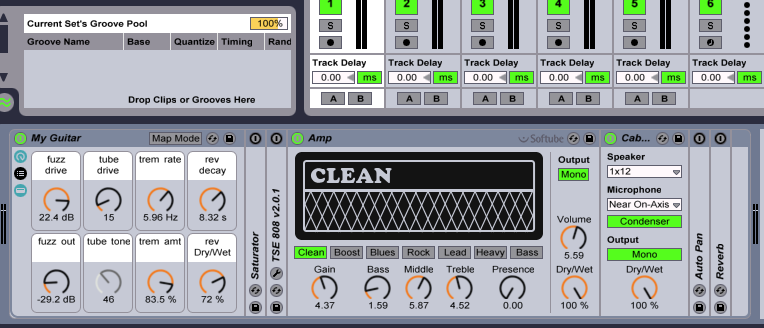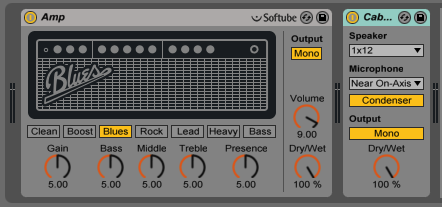Unleashing the Power of Guitar Processing: A Guide for Music Producers
Introduction
The sound of an electric guitar can be a driving force behind a wide range of music genres, from rock and blues to pop and electronic music. However, achieving the perfect guitar tone for your production isn't just about the instrument itself; it's about understanding the art of guitar processing. In this comprehensive guide, we'll explore the world of guitar processing for music producers. From signal chains and effects to creative techniques and recording tips, we'll dive deep into the tools and strategies that will help you unlock the full potential of your electric guitar tracks.
The Building Blocks of Guitar Processing
Before we dive into the nitty-gritty of guitar processing, let's break down the key components that form the foundation of crafting a great guitar tone:
The Guitar: The choice of guitar plays a significant role in defining the tone. Different types, such as single-coil or humbucker pickups, can yield vastly different sonic characteristics.
Amplifiers: The amplifier is a critical part of the signal chain, shaping the guitar's raw sound into something bigger and more dynamic. Tube, solid-state, or modeling amps each have their unique qualities.
Effects Pedals: These are devices that alter the guitar's signal in various ways. Common effects include distortion, overdrive, delay, reverb, chorus, and more.
Recording and Post-Processing: The process of capturing the guitar's sound and refining it in post-production is essential. This includes mic placement, recording techniques, and mixing.
Now, let's delve deeper into each of these components to understand how they influence the final guitar tone in your music productions.
Crafting Your Guitar Tone
The Guitar:
The guitar itself is the source of your tone. Each type of guitar has its distinct tonal characteristics. For example:
Single-coil pickups (e.g., Fender Stratocaster) are known for their bright, clear sound and sparkling cleans.
Humbucker pickups (e.g., Gibson Les Paul) produce a thicker, more powerful sound with less noise.
Semi-hollow and hollow-body guitars (e.g., Gibson ES-335) offer warm, resonant tones suitable for jazz and blues.
Experimenting with different guitars is a crucial step in finding the perfect tone for your track. While the guitar type matters, remember that factors like string gauge, age of strings, and playing technique also contribute to the overall sound.
Amplifiers:
Amplifiers are responsible for amplifying the guitar's signal and imparting tonal characteristics. Here are a few amplifier types and their typical sound profiles:
Tube Amps: Loved for their warm, rich tones and natural distortion when pushed. Perfect for classic rock, blues, and vintage sounds.
Solid-State Amps: Known for their clean and reliable sound. Commonly used for genres where a crystal-clear tone is essential.
Modeling Amps: These amps simulate various amplifier and cabinet combinations, making them versatile for different styles.
The choice of amplifier heavily influences your guitar tone. Experiment with different amps to find the one that best suits your music.
Effects Pedals:
Effects pedals allow you to shape and manipulate your guitar's sound. Here are some common guitar effects and their applications:
Distortion and Overdrive: These effects add grit and saturation to the sound, essential for rock and metal genres.
Delay and Reverb: These create spatial depth and atmosphere. Delay produces echoes, while reverb simulates room acoustics.
Modulation Effects (Chorus, Flanger, Phaser): These add movement and complexity to your guitar tone, often used in pop and funk.
Wah-Wah and Whammy: These are expressive effects that create dramatic shifts in tone and pitch.
Building your pedalboard with the right combination of effects can be an art in itself. Experimentation is key to finding unique sounds that suit your music style.
Recording and Post-Processing:
Recording the guitar involves more than just pointing a microphone at the amp. Techniques like mic placement, room acoustics, and choice of microphones can significantly impact the final recorded tone.
Post-processing during mixing and mastering also plays a crucial role in refining the guitar sound. Equalization, compression, and effects applied at this stage can further shape the tone to fit seamlessly into your mix.
Building the Perfect Signal Chain
Now that you have a solid understanding of the components involved, let's talk about signal chains. A signal chain is the sequence in which the guitar signal passes through various devices and effects. The order of these components can dramatically affect the final sound.
Here's a typical signal chain for processing an electric guitar:
Guitar: The signal begins at the guitar itself, influenced by its type, pickups, and the player's technique.
Effects Pedals: This is where you apply your choice of effects. The order of pedals matters:
Dynamics Processing: Compressors and limiters can come first to control dynamics.
Drive/Boost: Distortion and overdrive pedals often come next to shape the core tone.
Modulation and Time-Based Effects: Chorus, delay, and reverb effects follow, adding spatial and textural elements to the sound.
Amplifier: The guitar signal then goes to the amplifier, which contributes to the overall tonal character.
Cabinet and Microphone: If you're miking an amp, the microphone and cabinet choice play a critical role. Experiment with different mic placements and microphone types to capture the sound accurately.
Preamp/Recording Interface: If you're recording digitally, the preamp and recording interface you use can introduce coloration to the sound.
Digital Effects and Post-Processing: After recording, additional digital effects and post-processing can be applied during mixing and mastering.
The key to building a great signal chain is experimentation. Try different orders of effects and components to discover unique tones that fit your music.
Creative Techniques for Guitar Processing
Now, let's explore some creative techniques that can elevate your guitar sound and add character to your productions:
Layering Guitars: Recording multiple guitar tracks with different tones and effects and panning them in the mix can create a rich and immersive sound.
Double-Tracking: Recording the same part twice and panning the tracks can add depth and make the guitar sound larger than life.
Amp Mic Blending: Combine multiple microphones and experiment with their phase relationships to capture a unique guitar tone.
Feedback and Noise: Controlled feedback can add a unique and experimental element to your guitar tracks. Use it sparingly for dramatic effect.
Harmonics and Artificial Harmonics: Experiment with harmonics and artificial harmonics to create otherworldly textures and accents in your guitar parts.
Slide and Unconventional Playing Techniques: Slide guitar, fingerstyle, and unconventional playing techniques can yield surprising and fresh sounds.
Guitar Processing in Home Studios
If you're producing music in a home studio, you might not have access to a collection of high-end amplifiers and recording equipment. However, this shouldn't limit your ability to achieve great guitar tones. Here are some tips for guitar processing in home studios:
Amp Simulators: Utilize digital amp simulators and modelers to replicate the sound of various amplifiers and effects pedals.
Impulse Responses (IRs): IRs are digital representations of real speaker cabinets and microphones. You can use them with amp simulators to achieve authentic guitar tones.
Direct Recording: In a home studio, you can record your guitar directly into your audio interface, eliminating the need for miking an amplifier.
Virtual Effects: Access a vast array of virtual effects plugins to shape your guitar tone precisely the way you want it.
Experimentation: Don't hesitate to experiment and find creative solutions. Many classic guitar sounds were born out of resourcefulness.
Conclusion
Guitar processing is an art that combines the science of electronics, acoustics, and recording with the creativity of music production. As a music producer, understanding the components of guitar processing, crafting the perfect signal chain, and employing creative techniques can help you shape the ideal guitar tone for your tracks.
Remember, there are no strict rules in music production, only guidelines. The magic often happens through experimentation and pushing the boundaries of what's possible. So, whether you're producing rock anthems, soulful blues, or experimental electronic music, embrace the world of guitar processing, and let your creativity soar as you sculpt captivating sonic landscapes




